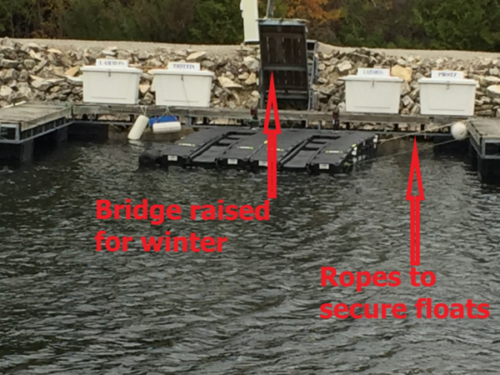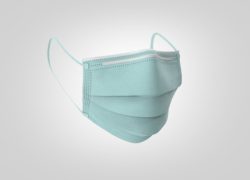Should Floating Piers be removed in winter?
Winter can be brutal in Wisconsin. It’s already knocking on the door. What should you do with your floating dock in winter? Will I lose my investment? Should I remove it or leave it in place? Will it get damaged if I leave it in the water? These are all excellent questions.
What should you do with your floating dock in winter?
It depends! It depends on several things. Are you on a pond or in an enclosed area with no ice movement? Then your dock has a chance to survive.
During the winter, there should not be any problem with dock damage. Most people don’t realize this, but there is NO ice under your floats. If you could reach through the ice and put your hand under the float, you would find open water.
The dock is floating on a bed of water throughout the winter. Yes, there is ice all around the sides and under the pier but not under the floats. If the ice does try to squeeze the sides, the floats will push up higher.
Can floating docks survive in winter?
Yes, if certain conditions exist.
Condition 1 and the essential requirement is: There can be NO ice movement in spring. If the ice moves in spring, there is no way to stop damage. You will most likely lose your investment – even on a small pond. Has the ice ever piled up on the shore?
There is one exception to this rule.
On a pond or in a tightly enclosed area where the ice does not pile up, you can leave it in the water. You must, however, remove anything that holds the pier in a firm location. We recommend that before the area freezes over, you move the dock into the center of the pond and loosely tie ropes to keep it there.
By tying the dock off the shore, the pier will move along with it in the winter and early spring. Moving the pier or raft to the center will save your dock from severe damage. 99% of the time, when the dock finally reaches the shore, the ice has melted away.
Condition 2. Waves should not exceed 1 foot. Remember, the dock in the pond’s center is loosely tied, and you don’t want the dock being torn loose.
Condition 3. Remove any “canopy-like” structures, so they do not allow the wind to move the dock.
Condition 4. Do not allow any of the floats to drag on the bottom at the shore. Allowing any floats to contact the shoreline or sit on rocks could destroy the float and dock.
Condition 5. Remove ladders or any other accessories from the water. Do not allow anything to hand down in the water during the winter.
CONCLUSION
Should I remove it or leave it in during the winter?
Follow these conditions, and in most cases, you will be OK.
Where is Pier & Waterfront Solutions?
Located at 7325 St. Hwy 57, it’s 3 miles south of Sturgeon Bay and 1 mile past the intersection of Cty MM (heading north). Look on the right at the intersection of Idlewild Road and Hwy 57.
ARE WE OPEN?
Pier & Waterfront Solutions remains “open.”
We have implemented measures to ensure the safety of our employees and visitors. At the same time, we are working to maintain the trusted service you expect.
Because the virus has increased its spread, PWS is conducting as much business as possible by email, text, or phone.
Site visits continue as usual. When in-person contacts are necessary, we follow “social distancing” guidelines as closely as possible.
We provide estimates and quotes by email to make the process paperless, faster, and safer. We hope everyone will stay safe with these measures, and we will be back to normal operations soon.
Our display yard is always open for you to examine at your leisure. All displays available for sale have a numbered, red tag on them. If you want more information or pricing, please reference that number when you call.
We provide estimates and quotes by email to make the process paperless, faster, and safer. We hope everyone will stay safe with these measures, and we will be back to normal operations soon.
What can YOU do?
Please conduct as much business as possible via emails, messaging, and emails. When you see our crews on-site, please practice “social distancing.”
Call, message, or email us with any questions.
Thank you for allowing us to work with you safely.







